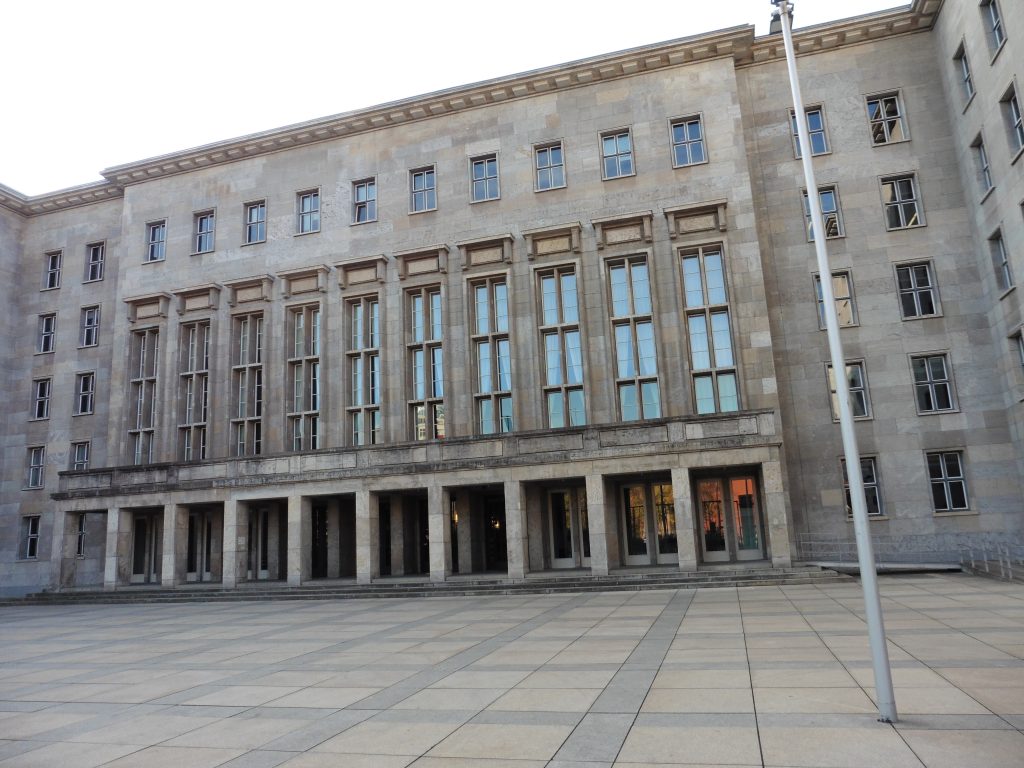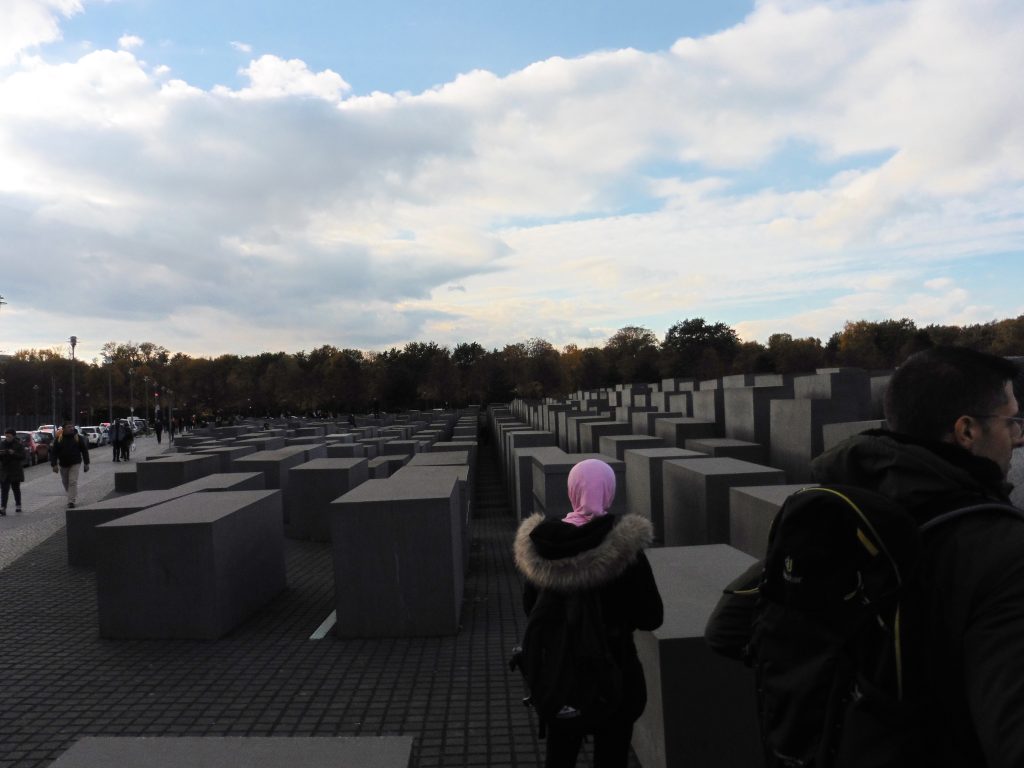

The Detlev-Rohwedder-Haus (Detlev Rohwedder House) is a building in Berlin that at the time of its construction was the largest office building in Europe. It was constructed between February 1935 and August 1936 to house the German Ministry of Aviation. The Air Ministry building was one of the few Nazi public buildings in central Berlin to escape serious damage during the Allied bombing offensive in 1944-45.
With its seven stories and total floor area of 112,000 square metres (1,210,000 sq ft), 2,800 rooms, 7 kilometres (4.3 mi) of corridors, over 4,000 windows, 17 stairways, and with the stone coming from no fewer than 50 quarries, the vast building served the growing bureaucracy of the Luftwaffe, plus Germany’s civil aviation authority which was also located there. Yet it took only 18 months to build, the army of labourers working double shifts and Sundays.
 The Memorial is surprisingly deep at points and shallow at others.
The Memorial is surprisingly deep at points and shallow at others.

